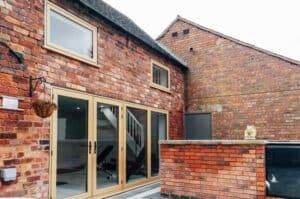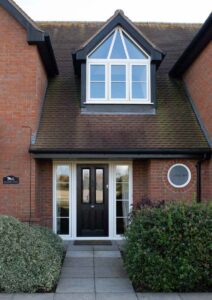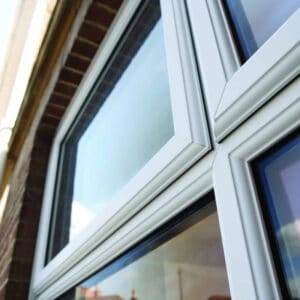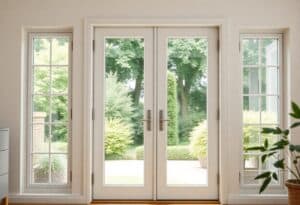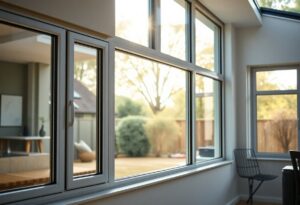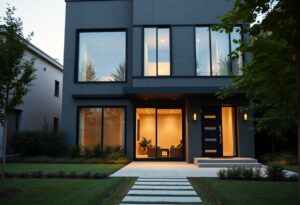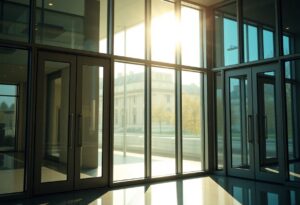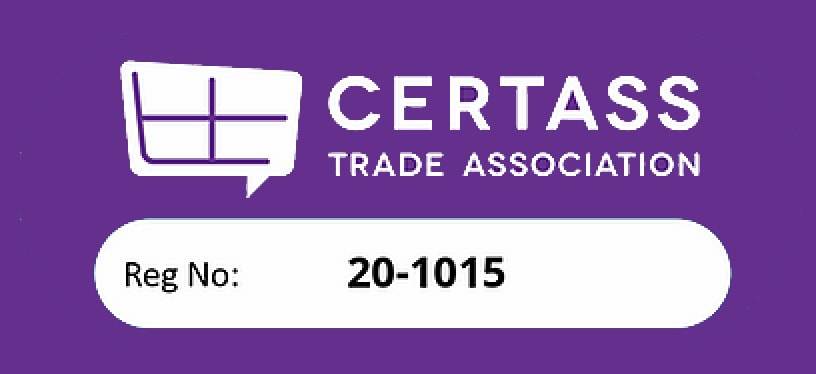You might have noticed how smart aluminium has transformed the landscape of modern architecture, blending innovation with aesthetic appeal. This case study probes into the practical applications of this versatile material, showcasing its benefits in design and sustainability. By exploring various projects, you will gain insights into how architects are harnessing smart aluminium to create striking structures that not only captivate the eye but also meet the demands of contemporary living. Join us on this journey to unravel the future of architectural design through the lens of smart aluminium.
History of Aluminium in Architecture
Early Beginnings
Beginnings of aluminium in architecture can be traced back to the 19th century, when this relatively new metal first emerged as an alternative to traditional materials. Its lightweight nature and resistance to corrosion caught the attention of architects and builders, who saw its potential for innovation and modernisation in their designs.
Evolution of Aluminium in Building Design
Building on its initial allure, aluminium evolved into a staple within the architectural field. From the early applications seen in decorative elements to its adoption in modern structural components, this metal transformed the way buildings are designed and constructed. You may find that its versatility has allowed for both aesthetic and functional advancements in various architectural styles.
Aluminium has significantly shaped contemporary building design, offering both strength and flexibility. As architects explore the potential of this material, you’ll notice its increasing use in facades, windows, and even entire building structures. Wonders emerge as aluminium’s properties are harnessed, promoting energy efficiency and sustainability, which are critical in today’s eco-conscious world. Understanding this evolution will deepen your appreciation for the ways in which aluminium continues to redefine the landscape of architecture.
Smart Aluminium in Modern Architecture
Definition and Characteristics
It is important to understand that smart aluminium refers to a new generation of aluminium materials enhanced with technology, enabling them to respond dynamically to environmental conditions. This innovative approach combines traditional aluminium’s versatility with advanced features such as self-cleaning surfaces, improved thermal insulation, and integrated sensors that can monitor structural integrity and energy performance.
Benefits and Advantages
Architecture using smart aluminium offers a multitude of benefits that can significantly enhance your projects. An integral feature of these materials is their ability to improve energy efficiency, which can lead to substantial cost savings over time while reducing the overall carbon footprint of your designs.
Modern architecture embraces smart aluminium not merely for its aesthetic appeal, but also for its practical advantages. You will find that these materials promote sustainable practices by optimising energy consumption and adapting to changing weather patterns. Moreover, their lightweight nature allows for innovative structural designs, enabling the creation of intricate forms that were once deemed impossible. This evolution in architecture not only showcases your creativity but also aligns with the growing demand for environmentally-conscious building solutions, ultimately shaping the built environment of the future.
Applications of Smart Aluminium
One of the remarkable benefits of smart aluminium lies in its varied applications, particularly in modern architecture.
Energy Efficiency
An imperative feature of smart aluminium is its ability to enhance energy efficiency. By utilising reflective properties and innovative designs, structures can minimise heat gain during warmer months and retain warmth in cooler seasons. This results in reduced energy consumption for heating and cooling, leading to significant cost savings over time.
Sustainability
To prioritise the health of our planet, smart aluminium plays a pivotal role in promoting sustainability. Its lightweight nature and recyclability contribute to resource conservation and reduced carbon footprints. Architects and builders increasingly favour this material, recognising its potential to contribute to eco-friendly practices without compromising on functionality or durability.
A growing awareness of ecological concerns has made sustainability a cornerstone of modern architecture. Smart aluminium, being fully recyclable, allows you to embrace green design principles while transforming urban landscapes. By opting for this material, you’re not only adhering to sustainable practices but also supporting a circular economy that benefits future generations.
Aesthetic Appeal
For architects and designers, smart aluminium offers an impressive aesthetic appeal that melds functionality with modern elegance. This material can be manipulated into various forms, allowing for unique, eye-catching structures that elevate your projects to new artistic heights.
Plus, the refined finish and sleek lines of smart aluminium provide an undeniably contemporary look. Its versatility means you can easily match it with different architectural styles, further enhancing the visual impact of your designs. Whether used in facades, windows, or roofing, smart aluminium can embody your vision while making a bold design statement.
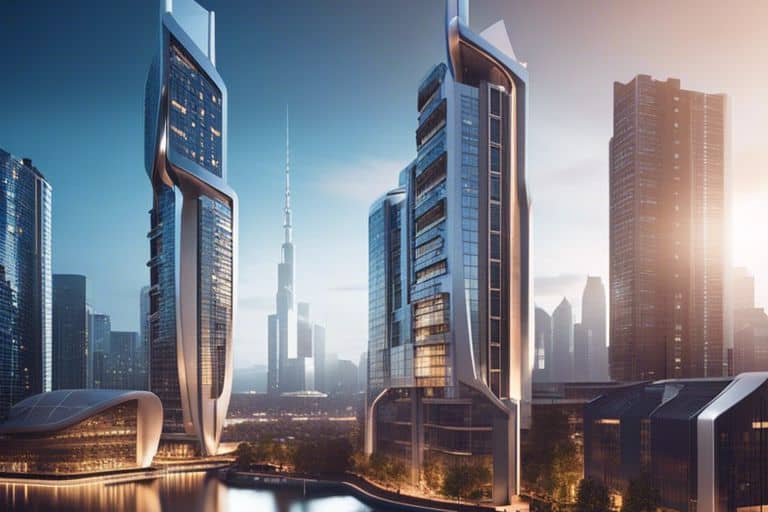
Challenges and Future Directions
Despite the impressive advancements in smart aluminium technology, the journey forward is not without its hurdles. You may find that issues such as high initial costs and the complexity of integration with existing systems can present significant challenges. Additionally, finding skilled professionals who understand this innovative material can be a daunting task, limiting its widespread adoption in modern architecture.
Overcoming Obstacles
Obstacles in implementing smart aluminium often stem from financial constraints and a lack of knowledge among stakeholders. As an architect or builder, you must address these concerns through education and demonstration of the long-term benefits, such as energy efficiency and sustainability, ultimately paving the way for broader acceptance.
Emerging Trends
Challenges lie not only in acceptance but also in the evolving nature of smart technology. Trends suggest that as sustainability becomes increasingly prioritised, the demand for innovative materials like smart aluminium will rise. You may witness a shift where smart materials hold greater prevalence in architectural design, driven by consumer awareness and regulatory mandates.
Trends in modern architecture indicate a growing inclination towards integrating smart technologies into building materials, including aluminium. This evolution presents exciting opportunities for you, as innovative applications emerge, turning buildings into responsive environments. As smart cities develop, your knowledge of sophisticated materials like smart aluminium ensures you remain at the forefront of architectural design, ready to embrace both challenges and innovations in the field.
Summing up
Taking this into account, you can see how smart aluminium profoundly enhances modern architecture, bridging functionality and aesthetic appeal. This material not only brings innovation to design but also improves sustainability, making it a cornerstone of contemporary construction. By embracing smart aluminium, you unlock a world of possibilities that seamlessly blend beauty with practicality, ensuring your architectural visions are both striking and environmentally responsible.
FAQ
Q: What are the advantages of using aluminium in modern architecture?
A: Aluminium offers numerous advantages in modern architecture, including its lightweight nature, which allows for more innovative structural designs. It is also highly durable and resistant to corrosion, making it ideal for a variety of climates. Additionally, aluminium can be easily moulded and shaped, providing architects with greater flexibility in their designs. Its ability to conduct heat and electricity can also be strategically utilised, enhancing energy efficiency in buildings.
Q: How does Smart Aluminium differ from traditional aluminium in architectural applications?
A: Smart Aluminium incorporates advanced technology that allows it to respond dynamically to environmental conditions. This includes features such as self-shading and enhanced insulation properties, which are not present in traditional aluminium. Smart Aluminium can adjust its properties based on temperature, sunlight, and other factors, thereby improving energy efficiency and comfort within the building. This adaptability makes it an increasingly popular choice in contemporary architecture, especially in sustainable building designs.
Q: Can Smart Aluminium contribute to sustainability in architecture?
A: Yes, Smart Aluminium can significantly contribute to sustainability in architecture. Its energy-efficient properties help reduce the overall energy consumption of buildings, which is a critical factor in sustainable design. Furthermore, aluminium is fully recyclable, meaning that it can be repurposed without degrading its quality, thereby minimising waste. The integration of Smart Aluminium in building design promotes better resource management and supports a reduction in the carbon footprint of architectural projects.


